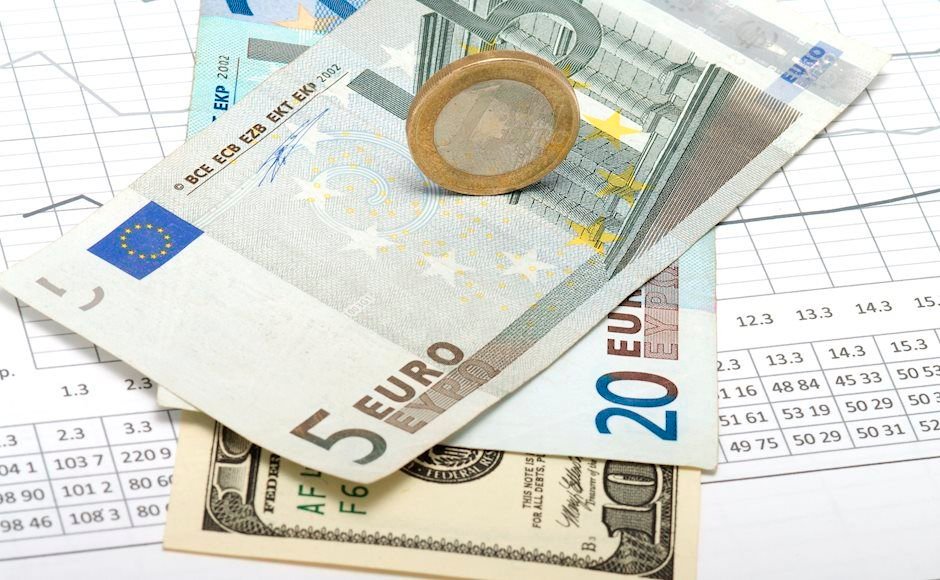EUR/USD consolidates in a tight range near 1.0500, with investors focusing on the Fed’s policy meeting.
The Fed is widely expected to cut interest rates by 25 bps but to deliver slightly hawkish remarks on policy guidance.
ECB’s Rehn said that inflation stabilizing near the central bank’s target of 2% paves the way for more interest rate cuts.
EUR/USD trades in a tight range near the psychological figure of 1.0500 in Wednesday’s European session. The major currency pair consolidates as investors await the outcome of the last Federal Reserve’s (Fed) policy meeting of the year, which will conclude at 19:00 GMT. The Fed will also release the revision of the Summary of Economic Projections (SEP), also known as the dot plot, which shows fresh economic projections and where policymakers see Federal Fund Rates heading in the medium and long term.
Analysts at Bank of America (BofA) expect the Fed to reduce interest rates by 25 basis points (bps) to the 4.25%-4.5% range. The CME FedWatch tool also shows that market participants have fully priced in a 25 bps interest rate reduction.
With traders fully pricing in a standard rate cut announcement, investors will focus primarily on Fed Chair Jerome Powell’s press conference on interest rate guidance. BofA analysts expect Powell to signal a gradual rate-cut approach ahead, potentially indicating a pause in January if economic data meets expectations.
Meanwhile, traders are also confident that the Fed will leave interest rates unchanged at 4.25%-4.50% in January, according to the CME FedWatch tool.
Ahead of the Fed policy decision, the US Dollar (USD) shows a muted price action, with the US Dollar Index (DXY) wobbling near 107.00.
Daily digest market movers: EUR/USD trades quietly with Fed policy in focus
EUR/USD trades on the sidelines due to consolidation in the US Dollar ahead of the Fed’s policy decision. The Euro (EUR) is higher across the board on Wednesday but its outlook remains bearish as investors expect the European Central Bank (ECB) to head to the neutral rate, which officials have forecasted around 2%, by the first half of 2025.
Traders expect the ECB to reduce interest rates at every meeting till June 2025. Officials are highly concerned about growing economic risks in the Eurozone and are confident that price pressures will sustainably return to the central bank’s target next year.
On Tuesday, ECB policymaker and Finnish central bank Governor Olli Rehn said that inflationary pressures stabilizing near the bank’s target of 2% set the stage for further interest rate reduction. Rehn refrained from providing a specific rate cut path and said, “The speed and scale of the rate cuts will be determined in each meeting on the basis of incoming data and comprehensive analysis.”
When asked about how the continent will face incoming tariff hikes from the US President-elect Donald Trump administration, Rehn said, “Negotiation is preferable, and the European Union’s (EU) negotiating position can be strengthened by demonstrating in advance that it is ready to take countermeasures if the United States threatens Europe with higher tariffs.”
Euro PRICE Today
The table below shows the percentage change of Euro (EUR) against listed major currencies today. Euro was the strongest against the New Zealand Dollar.
| USD | EUR | GBP | JPY | CAD | AUD | NZD | CHF | |
|---|---|---|---|---|---|---|---|---|
| USD | -0.09% | 0.01% | 0.05% | 0.10% | 0.35% | 0.39% | 0.08% | |
| EUR | 0.09% | 0.11% | 0.15% | 0.19% | 0.45% | 0.49% | 0.19% | |
| GBP | -0.01% | -0.11% | 0.04% | 0.08% | 0.34% | 0.38% | 0.07% | |
| JPY | -0.05% | -0.15% | -0.04% | 0.02% | 0.28% | 0.31% | 0.00% | |
| CAD | -0.10% | -0.19% | -0.08% | -0.02% | 0.25% | 0.30% | -0.01% | |
| AUD | -0.35% | -0.45% | -0.34% | -0.28% | -0.25% | 0.04% | -0.27% | |
| NZD | -0.39% | -0.49% | -0.38% | -0.31% | -0.30% | -0.04% | -0.31% | |
| CHF | -0.08% | -0.19% | -0.07% | -0.01% | 0.01% | 0.27% | 0.31% |
The heat map shows percentage changes of major currencies against each other. The base currency is picked from the left column, while the quote currency is picked from the top row. For example, if you pick the Euro from the left column and move along the horizontal line to the US Dollar, the percentage change displayed in the box will represent EUR (base)/USD (quote).
Technical Analysis: EUR/USD oscillates around 1.0500

EUR/USD has traded back and forth around the psychological figure of 1.0500 over the last five trading days. The major currency pair faces pressure near the 20-day Exponential Moving Average (EMA), which trades around 1.0535, suggesting that the near-term trend is bearish.
The 14-day Relative Strength Index (RSI) revolves around 40.00. The bearish momentum should trigger if the RSI (14) falls below that level.
Looking down, the two-year low of 1.0330, reached on November 22, will provide key support. Conversely, the December 6 high of 1.0630 will be the key barrier for the Euro bulls.









